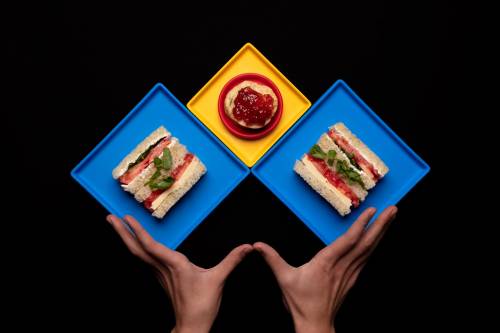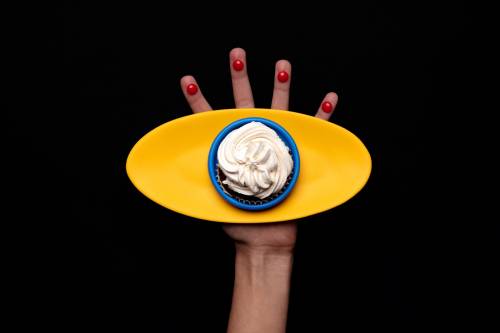It is an irony of history, if not an instance of cosmic feminist karma, that the best British-inspired tea parlors in New York City—among them Tea & Sympathy, Lady Mendl’s, and Brooklyn High Low—are women-owned establishments. From 1657, when tea first became available in London’s coffeehouses, to the early seventeen-hundreds, when women were invited in, recreational tea drinking was the preserve of rumbustious gentlemen. A contemporaneous broadsheet celebrated the drink’s power to “maketh the body active and lusty.” In the course of the next two centuries, the musk of patriarchy lifted from this risqué pastime, and, by 1889, The Ladies’ Home Journal could report that “the five o’clock tea has become an institution of society” where “ladies are generally in the majority.”

At Lady Mendl’s, the finger sandwiches range from classic to daringly unconventional, including a crostini topped with butternut-squash purée and Boursin cheese.
In the nineteen-eighties, for a New York University workshop, a London expat named Nicola Perry drafted a business plan for “an English-style tea room, designed to introduce an American clientele to the delights of a great British tradition.” She wrote, “The atmosphere and decor will be cosy and comfortable,” with “old china and silverware, chintz tablecloths and lace curtains.” In 1990, two days before Christmas, Perry held her first afternoon tea at Tea & Sympathy (108 Greenwich Ave.; tea service from $40): a two-tiered platter of finger sandwiches, scones with jam and clotted cream, vanilla sponge cake, and hot black tea served in the daintiest of cups. Today, the popular West Village tea shop can take on the atmosphere of a pub, and Perry has had to institute some house rules, which she’s printed on the menu. No. 5: “Be pleasant to the waitresses.”

Brooklyn High Low offers twenty-nine tea varieties, including one infused with whole butterfly-pea flowers that turn the liquid a psychedelic indigo.
Lady Mendl’s (56 Irving Pl.; tea service $65), in Gramercy Park, is named for a socialite and a pioneering interior decorator who once lived in the neighborhood. The resplendent salon, tucked inside an 1834 Georgian brownstone, is easy to miss, but once found this little jewel box reveals treasures. The five-course afternoon tea commences with a pumpkin-apple soup, with crème fraîche, pomegranate seeds, and toasted pepitas, in a Moroccan tea glass. The finger sandwiches range from classic (egg salad, smoked salmon, cucumber and butter) to daringly unconventional, including a crostini topped with butternut-squash purée, Boursin cheese, arugula, and balsamic glaze. After miniature scones and twenty-one-layer vanilla-cream crêpe cake come pistachio macarons and chocolate-dipped strawberries. Each course is paired with one of six black, green, or herbal teas. A spokesperson said that the proprietress, soon to be ninety, is “comically wealthy and prefers to not have her name in print.”
Honey Moon Udarbe was raised by hippie parents in Northern California. On top of running Brooklyn High Low (611 Vanderbilt Ave.; tea service from $48), in Prospect Heights, she also operates a nearby vintage shop and cleans out the estates of dead rich folks. She does not part with anything if it can be repurposed; broken teacups are given new life as components of a gorgeously funky chandelier. If Lady Mendl’s takes liberties with the conventions of afternoon tea, Brooklyn High Low detonates the paradigm. Pastrami and Dijon mustard on rye? Guava and blue cheese on gluten-free bread? Twenty-nine tea varieties, including one infused with whole butterfly-pea flowers that turn the liquid a psychedelic indigo?
In the tea community, there is a narrow spectrum of permissible opinion as to whether, to a scone, one should first apply the cream or the jam. At both Tea & Sympathy and Lady Mendl’s, I was instructed, with some solemnity, to apply the cream first. At Brooklyn High Low, the server said, “I like to just use my fork and kind of dip in different things.” What?! Occasionally, the waitstaff there hear unaccountable creaking, or an item falls off a shelf, or a light flickers. “The building is fairly new, so the ghost probably came in with one of the tea sets,” Udarbe says. “I think she’s an old lady who’s just happy people are still using her teacups.” ♦
Sourse: newyorker.com

